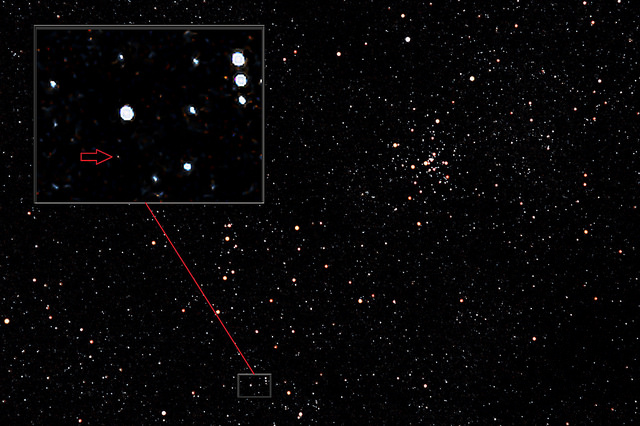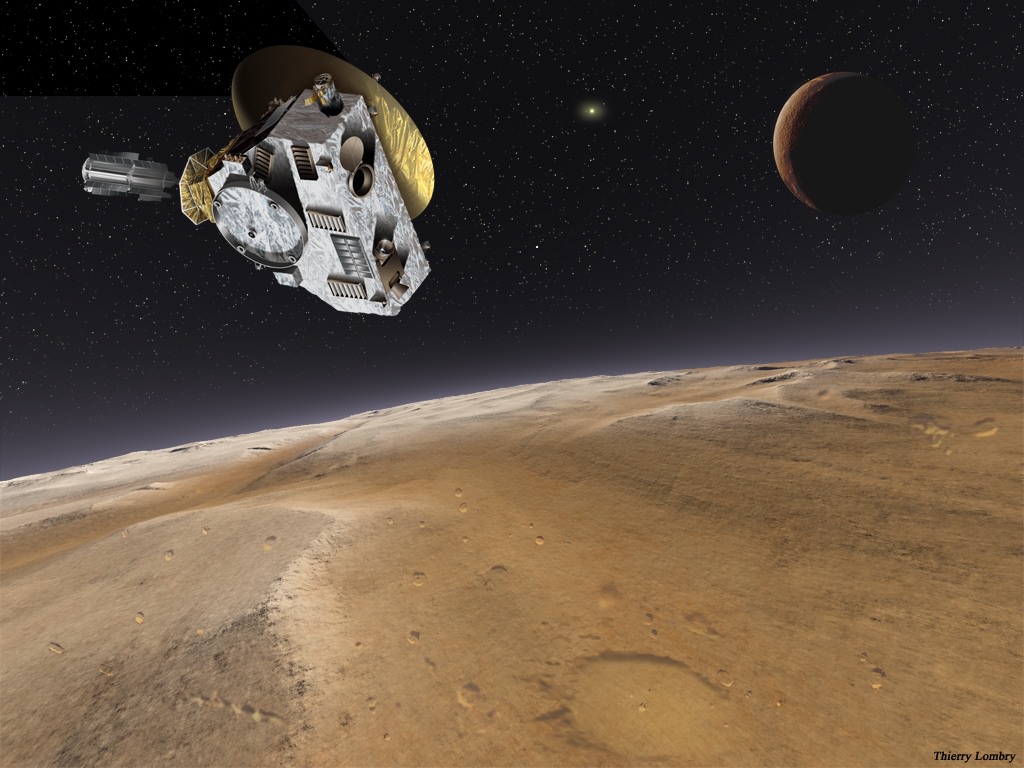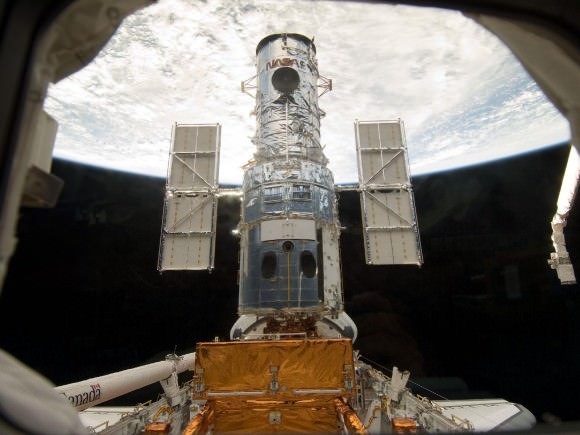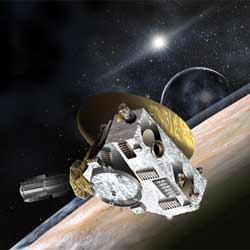Are you ready for 2015? On July 14th, 2015 — just a little over a year from now — NASA’s New Horizons spacecraft with perform its historic flyby of Pluto and its retinue of moons. Flying just 10,000 kilometres from the surface of Pluto — just 2.5% the distance from Earth to the Moon on closest approach — New Horizons is expected to revolutionize our understanding of these distant worlds.
And whether you see Pluto as a much maligned planetary member of the solar system, an archetypal Plutoid, or the “King of the Kuiper Belt,” you can spy this denizen of the outer solar system using a decent sized backyard telescope and a little patience.
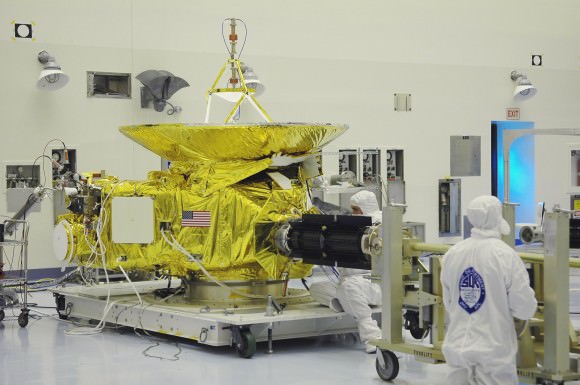
Pluto reaches opposition for 2014 later this week on Friday, July 4th at 3:00 Universal Time (UT), or 11:00 PM EDT on July 3rd. This means that Pluto will rise to the east as the Sun sits opposite to it in the west at sunset and transits the local meridian high to the south at local midnight. This is typically the point of closest approach to Earth for any outer solar system object and the time it is brightest.
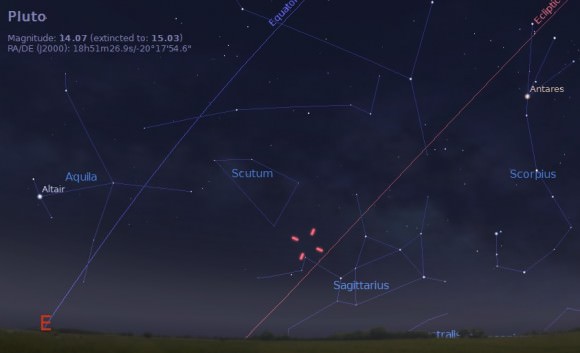
But even under the best of circumstances, finding Pluto isn’t easy. Pluto never shows a resolvable disk in even the largest backyard telescope, and instead, always appears like a tiny star-like point. When opposition occurs near perihelion — as it last did in 1989 — Pluto can reach a maximum “brilliancy” of magnitude +13.6. However, Pluto has an extremely elliptical orbit ranging from 30 to 49 Astronomical Units (A.U.s) from the Sun. In 2014, Pluto has dropped below +14th magnitude at opposition as it heads back out towards aphelion one century from now in 2114.
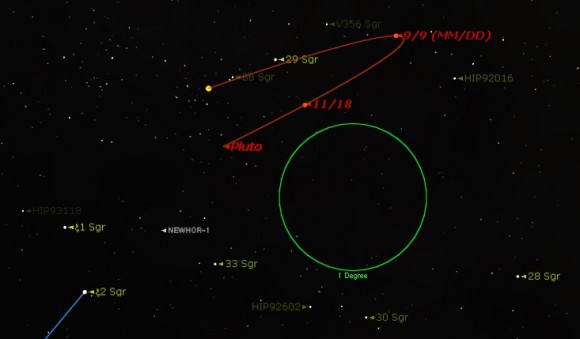
Another factor that makes finding Pluto challenging this decade is the fact that it’s crossing through the star-rich plane of the galaxy in the direction of the constellation Sagittarius until 2023. A good finder chart and accurate pointing is essential to identifying Pluto as it moves 1’ 30” a day against the starry background from one night to the next.
In fact, scouring this star-cluttered field is just one of the challenges faced by the New Horizons team as they hunt for a potential target for the spacecraft post-Pluto encounter. But this has also meant that Pluto has crossed some pretty photogenic regions of the sky, traversing dark Bok globules and skirting near star clusters.
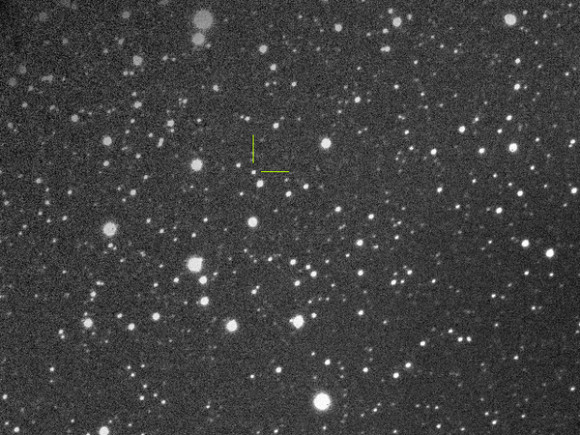
You can use this fact to your advantage, as nearby bright stars make great “guideposts” to aid in your Pluto-quest. Pluto passes less than 30” from the +7th magnitude pair BB Sagittarii on July 7th and 8th and less than 3’ from the +5.2 magnitude star 25 Sagittarii on July 21st… this could also make for an interesting animation sequence.
Though Pluto has been reliably spotted in telescopes as small as 6” in diameter, you’ll most likely need a scope 10” or larger to spot it. We’ve managed to catch Pluto from the Flandrau observatory situated in downtown Tucson using its venerable 14” reflector.
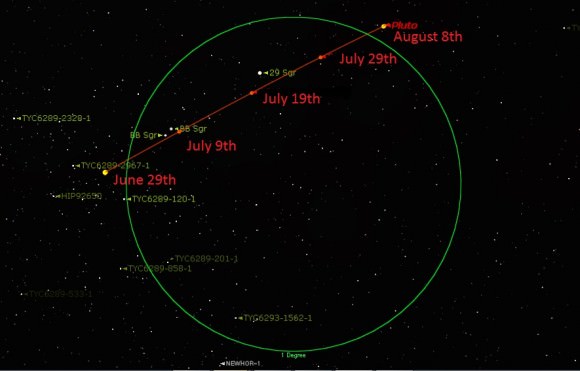
Pluto was discovered by Clyde Tombaugh from the Lowell Observatory in 1930 while it was crossing the constellation Gemini. It’s sobering to think that it has only worked its way over to Sagittarius in the intervening 84 years. It was also relatively high in the northern hemisphere sky and headed towards perihelion decades later during discovery. 2014 finds Pluto at a southern declination of around -20 degrees, favoring the southern hemisphere. Had circumstances been reversed, or Pluto had been near aphelion, it could have easily escaped detection in the 20th century.
We’re also fortunate that Pluto is currently relatively close to the ecliptic plane, crossing it on October 24th, 2018. Its orbit is inclined 17 degrees relative to the ecliptic and had it been high above or below the plane of the solar system, sending a spacecraft to it in 2015 might have been out of the question due to fuel constraints.
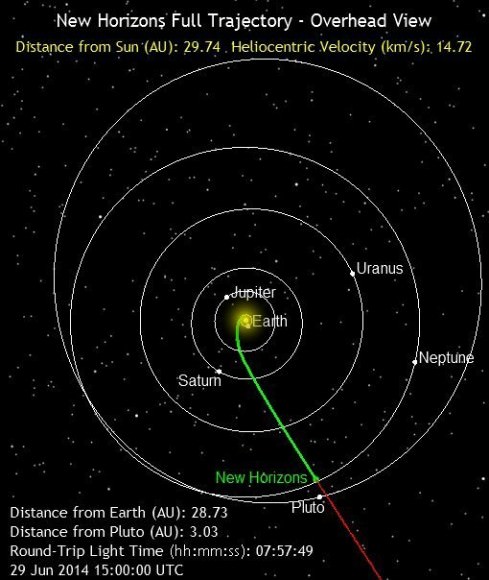
And speaking of spacecraft, New Horizons now sits less than one degree from Pluto as seen from our Earthly vantage point. And although you won’t be able to spy this Earthly ambassador with a telescope, you can wave in its general direction on July 11th and 12th, using the nearby waxing gibbous Moon as a guide:
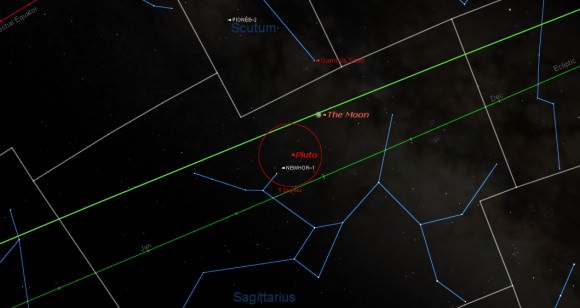
All eyes will be on Pluto and New Horizons in the coming year, as it heads towards a date with destiny… and we’ll bet that the “is Pluto a planet?” debate will rear its head once more as we get a good look at these far-flung worlds.
And hey, if nothing else, us science writers will at last have some decent pics of Pluto to illustrate articles with, as opposed to the same half-dozen blurry images and artist’s renditions…

